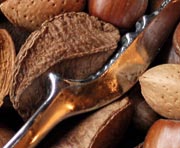The Bolivian cosmetics market is providing major growth opportunities for both domestic and multinational companies, as Jonathan Dyson reports from La Paz
Strong growth in Bolivia’s personal care market is attracting an increasing number of both international and domestic cosmetics brands, capitalising on rising demand for products across all consumer demographics. This market success can be linked to the country’s overall economic growth in recent years, which has seen GDP rise about 5% per year since the country’s indigenous socialist president Evo Morales came to power in 2006.
The value of Bolivia’s beauty and personal care market grew 12.7% to $279.7m in 2011, according to market research firm Euromonitor International, and sales are forecast to rise a further 10.4% to $309m in 2012 (and at a CAGR of 7.3%, up to $436.6m in 2016). Euromonitor research analyst Larissa Linares told SPC that currently cosmetics companies are successfully targeting all types of consumers in Bolivia: “On the one hand, lower income consumers who are entering the market; and on the other, higher income consumers who are becoming more demanding.”
According to Linares, different strategies are required to attract sales from these different consumer segments however. For lower income consumers, pack size appears to be an important factor for those who are “on the lookout for ways to economise and search for products that the whole family can use.” Larger ‘family’ packs for hair and skin care products that offer more convenient prices and reduce purchasing frequency have proven to be more successful. British-Dutch multinational Unilever and Bolivian cosmetics company Astrix, for example, both offer one-litre bottles of hair and skin care products.
In terms of high and upper middle income consumers, companies are focused on offering value added products. “For instance, anti-ageing products and products claiming to have natural ingredients are taking the lead, despite the higher prices they can carry,” Linares said. Moreover, she added, while direct sellers account for the majority of cosmetics sales, the importance of supermarkets and hypermarkets is also growing rapidly. “Despite still accounting for less than 20% of sales, they are becoming an important channel to promote new launches.”
“Fragrances and colour cosmetics are a good example of direct sellers’ success in Bolivia,” Linares said. “Traditionally, these categories were dominated by the informal market (smuggling), but nowadays most consumers prefer brands such as Avon, Ésika, Yanbal and Natura, not only because of the good prices they can get but also due to the close relationship they develop with consultants.”

Cosmetics using natural oils and butters such as murumuru, chestnut and Brazil nut are gaining in popularity
Meanwhile, the men’s personal care sector in Bolivia is also driving much of the overall market growth. Sales of men’s grooming products in Bolivia grew 15.2% to $26.8m in 2011 and are forecast to rise an additional 11.1% to $29.7m in 2012 (and at a CAGR of 7.7%, to $43m in 2016), according to Euromonitor.
“Definitely, men in Bolivia are showing more interest in purchasing cosmetics and looking for cosmetics designed for their special requirements,” said Lydia Müller de Vrsalovic, co-director of Cochabamba based natural cosmetics specialist CosNatVal, adding that Bolivian men today “worry more about the health and look of their skin”. CosNatVal has seen increased demand from men for its facial products, anti-ageing soaps, and hand and nail care products. Men are also purchasing larger volumes of the company’s biotrade soaps and emulsions, which are produced using natural oils such as cusi (babassu) and Brazil nut oil, along with natural butters such as cupuaçu and murumuru, reflecting the increasing sophistication of men’s cosmetic product choices.
Sales of baby and child specific personal care products are also growing, with the value of the sector increasing 15.9% to $7.7m in 2011 and forecast to rise a further 11% to $8.6m in 2012, according to Euromonitor. This sub-sector is also predicted to see a CAGR of 7.5% going forward, reaching $12.3m in 2016.

Overall, while international brands are making important headway in the country, the increase in demand for cosmetics is boosting Bolivia’s own personal care industry, which is capitalising in particular on the growing appeal of natural cosmetics.
Santa Cruz based Oleuns Beauty specialises in soaps using natural ingredients such as oils (cusi, buriti and chestnut), natural butters (cupuaçu and murumuru) and cocoa. “Our soaps are free of fragrances and free of dyes,” said director Marco García, adding that sales grew 60% in 2011 to $15m and the company is aiming to grow sales another 50% in 2012, to $30m. The brand plans to develop a range of hair products, body and facial creams and hand care products over the next year.
“People in Bolivia care a lot about sustainable management of their natural resources,” said Vrsalovic. “Consumers are more and more interested in organic and natural products.” Because of this, CosNatVal plans to build on the strong demand for its biotrade product ranges by expanding its portfolio to include hair care and sunscreen products. In addition, while the company currently exports to the US and Venezuela, it also plans to begin exporting to Germany, Brazil and Canada.
Finally, the Bolivian cosmetics industry should also benefit from moves to tackle black market and smuggled cosmetics. “The government has become more demanding in terms of meeting the legal requirements for the industry, reducing illegal competition which definitely benefits industries such as ours,” Vrsalovic commented.




